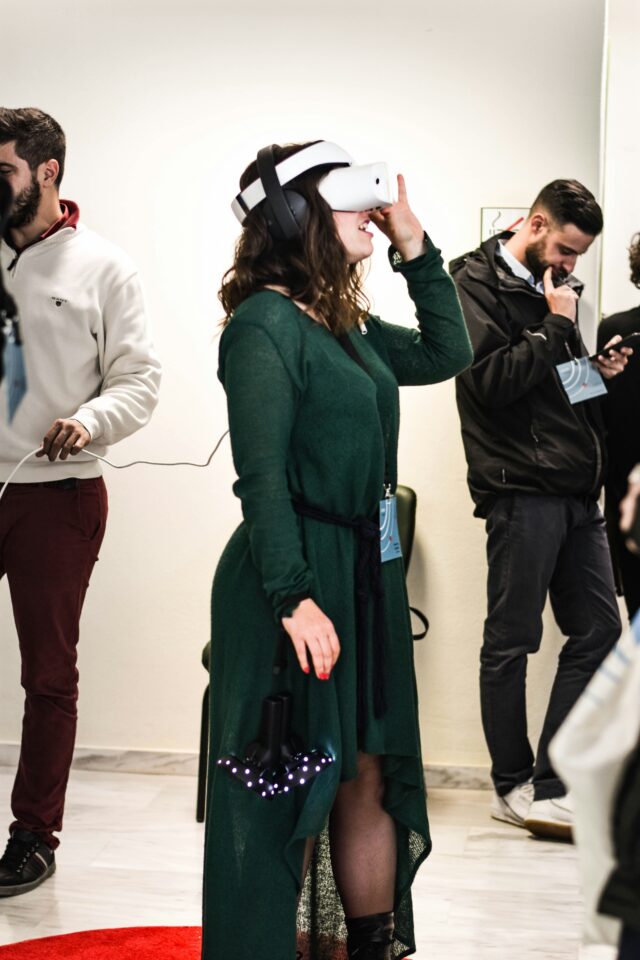
Low vision, defined as visual impairment that cannot be corrected with conventional glasses or contact lenses, affects millions of people globally and significantly impacts daily activities like reading, recognizing faces and navigating the environment. Age-related macular degeneration, glaucoma and diabetic retinopathy are common causes, primarily affecting the elderly population. With the aging population growing and an increasing prevalence of chronic eye diseases in our screen-obsessed world, the demand for low vision solutions is expected to rise.
Traditional low vision aids offer some improved visual acuity but have many limitations. Fortunately, the landscape of low vision rehabilitation is constantly evolving alongside rapid advancements in technology. The challenges presented by low vision span beyond mere impairment and encompass a spectrum of psychological and functional impairments that can diminish patients’ overall quality of life. This article explores recent breakthroughs in this hopeful frontier of low vision aids and how optometrists can leverage them to elevate patient care and outcomes, empowering them with greater autonomy and a renewed zest for life.
Technological Advancements
Recent breakthroughs are ushering in a new era of personalized, empowering low vision solutions that offer adaptable features that nest easily into modern life:
Electronic magnifiers and digital reading aids: These portable devices offer high-resolution magnification, variable settings, adjustable lighting, and the ability to freeze text for easier reading. Digital reading aids, equipped with OCR (Optical Character Recognition), convert printed text into spoken words.
Advanced software applications: Text-to-speech software reads text aloud and recognizes and describes images from any source, turning everyday items like smartphones and tablets into sophisticated vision aids.
Wearable technology: Smart glasses and augmented reality (AR) headsets overlay digital information onto the real world, truly redefining the possibilities for low vision patients. These devices can enhance remaining vision, provide auditory cues and even translate visual information into tactile feedback.
These technological advancements offer personalized care, greater independence and an improved quality of life that allows for engaging in hobbies, attending social events and increased autonomy with daily tasks.
Integrating Advanced Low Vision Aids into Clinical Practice
Staying current on the latest developments in low vision aids empowers optometrists to provide optimal patient care. Use technology to complement clinical expertise to create personalized, impactful treatment plans crucial for the most optimal outcomes. Here’s how:
Assess and Match Needs: A comprehensive evaluation helps identify specific patient needs and challenges. Optometrists can then match these needs with the most suitable technological solutions. Staying abreast of these technological advancements and solutions for low vision is paramount to personalizing care.
Train and Adapt: New technologies often require some training for patients to maximize the benefit. Optometrists can play a crucial role in guiding patients through this life-changing learning process. The American Academy of Ophthalmology (AAO) website is just one great resource for optometrists to stay updated on clinical trials and advancements in ophthalmology that may be relevant to low vision care.
Case Studies and Clinical Evidence
Research consistently demonstrates the effectiveness of these advanced aids. A recent study aimed to evaluate the efficacy of a wearable smartphone-based low vision aids (LVA) with customizable vision enhancement found that these aids could provide clinically significant improvements in the visual function of patients and was generally well tolerated, offering improvements in binocular best-corrected distance, intermediate, and near visual acuities, as well as in facial recognition performance and reading accuracy (NCBI).
In another NCBI study, individuals with low vision using AR headsets reported enhanced mobility and increased confidence in navigating unfamiliar environments. This data could be applied to increased social engagement and a resurgence of independence in low vision patients. Such testimonials underscore the transformative potential of integrating cutting-edge technology into low vision rehabilitation. However, research suggests that while benefits of XR technology (an umbrella term encompassing AR, VR, MR and everything in between) in low vision treatment are strong, there are still many practical considerations and research to be done. “By broadening end-user participation to early stages of the design process and shifting the focus from behavioral performance to qualitative assessments of usability, future research has the potential to develop XR technologies that may not only allow for studying vision loss but also enable novel visual accessibility aids with the potential to impact the lives of millions of people living with vision loss.”
Practical Considerations for Optometrists
Optometrists play a vital role in the early identification of low vision, and they are also at the forefront of this technological revolution, guiding patients through the maze of available options and ensuring they harness these innovations effectively. During routine eye examinations, vigilance for signs of low vision can lead to timely referrals for specialized low vision rehabilitation services. And when recommending low vision aids, factors such as cost, ease of use and compatibility with the patient’s lifestyle must all be considered. Finally, ongoing follow-up care and assessment are essential to ensure patients continue to derive maximum benefit from their low vision aids.
Embracing new technologies in low vision aids empowers optometrists to significantly improve patient outcomes. By proactively learning about, recommending and demonstrating these advancements, optometrists can play a pivotal role in helping patients with low vision achieve greater independence, improved quality of life and a renewed empowerment in their daily activities.
SOURCES: Optometry Times, National Center for Biotechnology Information (NCBI), National Center for Biotechnology Information (NCBI)



